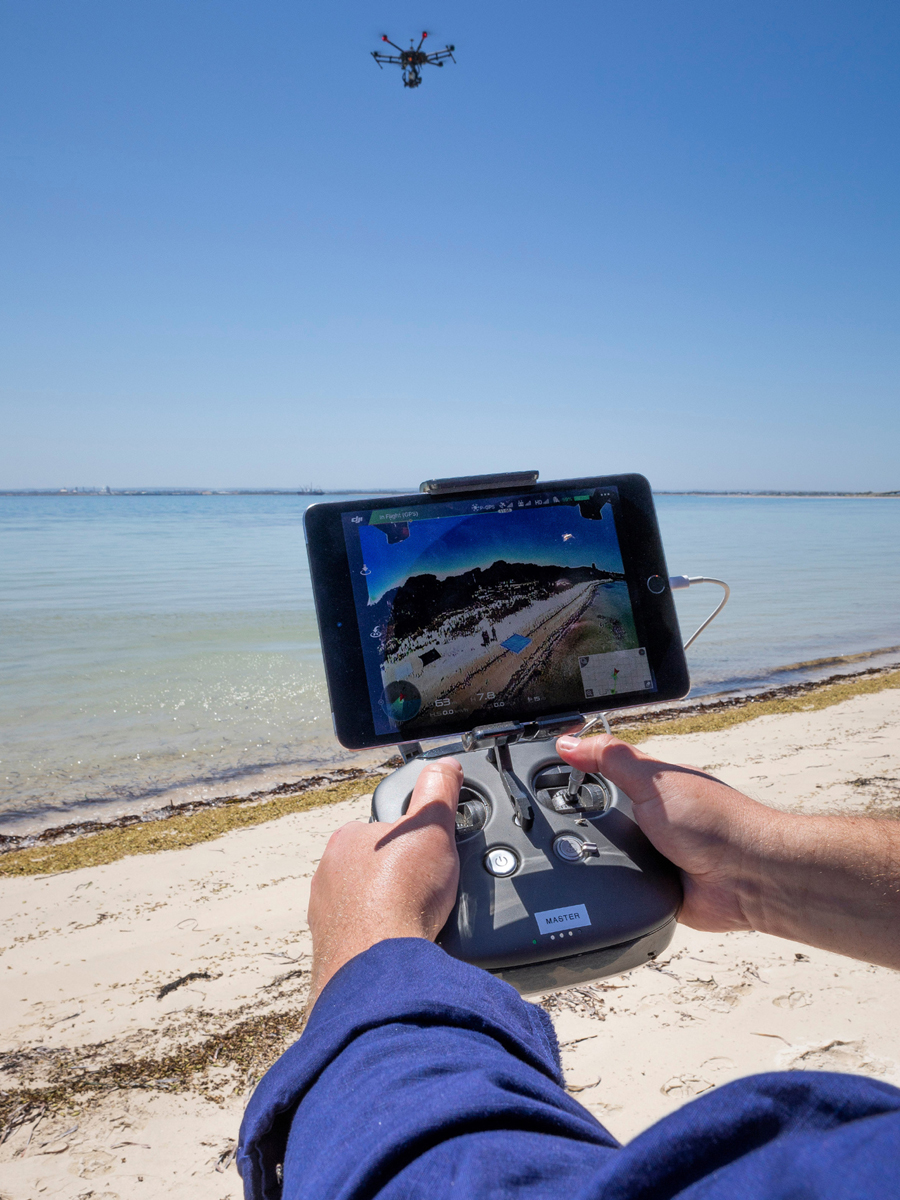Clearance divers hone shallow water skills
By Lookout on Dec 10, 2019 with Comments 0

Dr. Brad Evans, Defence Science and Technology Group Leader, Littoral Sensing and Processing Group, flies a drone to conduct mine detection. Photo by LSIS Kylie Jagiello, Navy Imagery Unit – West
Peter Mallett, Staff Writer ~
Members of Fleet Diving Unit (Pacific) battled poor visibility and close encounters with local sharks during their participation in a multi-national training exercise in Australia.
Exercise Dugong saw teams of Clearance Divers from Australia, New Zealand, United Kingdom, Canada, and the United States gather at Fleet Base West, near Perth, from Nov. 7 to 22.
The Royal Canadian Navy (RCN) sent a contingent of 14 personnel to the exercise: nine divers from FDU(P), one diver from Fleet Diving Unit (Atlantic), two personnel from Sea Bed Intervention Systems, a White Cell staff, and a Liaison Officer.
“It is always great to have the opportunity to work and train with some of the best [Clearance Diving] teams in the world in a setting where we can freely exchange tactics, training and procedures with our partner nations,” said Lieutenant (Navy) Viachaslau Khabian, head of FDU(P) Mine Countermeasures Department.
The exercise focused on Very Shallow Water (VSW) Mine Countermeasures at depths of 10 metres or less. VSW Mine Countermeasures are performed in preparation for amphibious landings and are normally done under the cloak of darkness for clandestine purposes.
During the exercise, each nation and their divers were given specific lanes near the shoreline to find and dispose of underwater mines. They dove in groups of two and were inserted from inflatable boats at a considerable distance from shore in order to avoid detection.
Clearing mines during nighttime operations proved to be challenging, as divers were forced to contend with rough sea conditions, high turbidity, and low light that caused extremely poor visibility, says Lt(N) Khabian.
Challenges aside, the exercise provided the RCN divers the opportunity to cooperate and solve problems with participating navies.
“Whenever RCN Clearance Divers are called upon to clear mines, we rarely do it alone. Generally, we are integrated into an international task force and work closely with our allies to accomplish our mission,” said Lt(N) Khabian. “Exercises like this are a great opportunity to learn how to work together, and learn each other’s capabilities and limitations so we do not run into logistical problems and communications issues when the real thing occurs.”
Sometimes the unexpected happens in training.
During one particular dive, Lt(N) Khabian and his dive partner LS Patrick Kory unwittingly encountered a shark as they combed the shoreline area for a piece of ordnance spotted earlier by an Autonomous Underwater Vehicle. As they approached what they thought was the target object, LS Kory saw on his hand-held underwater navigation and imaging system the object start moving.
“As I started to approach the object, we could see on the screen it was now moving away from us,” said Lt(N) Khabian “My dive partner started to pull me back when he realized it was a shark, but thankfully it wasn’t interested in us.”
Because of the poor visibility, the two men couldn’t make out the species of shark, but after review of sonar imagery they estimated it to be approximately three metres long. The experience, says Lt(N) Khabian, certainly gave him and his dive partner something to talk about during an event organized by their Australian hosts.
During exercise Dugong, partner nations also participated in a marksmanship contest using rifles. Despite some fierce competition from the Aussies, LS Justin McKinstry of the RCN beat out all competing nations with an astounding demonstration of quickness and accuracy.
Overall, exercise Dugong provided FDU(P) divers insight into the challenges of operating in Very Shallow Water environment, including local marine life.
Filed Under: Top Stories
About the Author:





